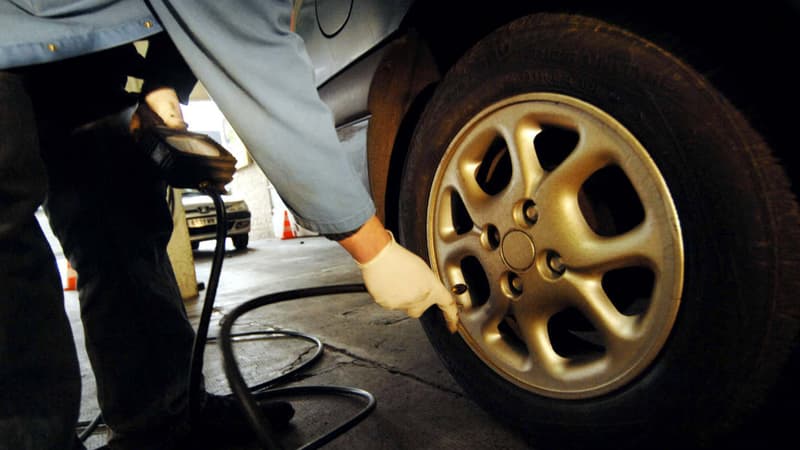They were called “the deflators” in 2005, here they are “the deflators” of 2022. In almost 20 years, the practice has not really changed and consists of deflating the tires of vehicles considered too polluting, most of the time in the middle of the night , pointing at cars. parked on the street or in front of houses.
Sixty deflated vehicles in Meudon
The lens has just had a name change: from the 4x4s of the early 21st century, activists – who present themselves as “environmentalists” – have moved on to off-roaders, not necessarily four-wheel drive. Considered too heavy and therefore too polluting, these vehicles have become one of the main targets of associations such as the WWF or Greenpeace.
This week, some sixty vehicles in the town of Meudon (Hauts-de-Seine) saw their tires go flat during a night of actions by activists, called “tire deflators”, belonging to a group launched in Britain last year. , “Tyre Fire Extinguishers”. Contacted by BFMTV, a spokesman claims 9,000 flat tires in various European countries this year and the goal of exceeding 10,000 before the end of the year.
As a general rule, a note is left on the windshield. This was in fact the case at Meudon. This prevents the driver from inadvertently getting behind the wheel that one or more of their tires have gone flat, which can be very dangerous once on the road.
“We have deflated one or more of your tires, do not take it personally, you are not our target, it is your vehicle. We do it because driving a vehicle of this size is particularly harmful”, we can read in the message read by a victim of this group.
The “low-polluting” and electric SUVs in question
Cars don’t always get the message, like this Meudon resident. Your SUV is classified Crit’Air 1, the best level before the green “0” sticker reserved for 100% electric vehicles.
“My vehicle pollutes less than a Clio, a Twingo, a small car with a combustion engine and a Crit’Air sticker of 3 or 4, or more,” Olivier explains to BFM Paris.
In truth, and although this does not in any way justify whether or not to deflate a car’s tires, the Crit’Air system is not really the right indicator to reflect the level of contamination. It is based solely on the type of engine (mainly petrol, diesel or electric) and the date of the first registration of the vehicle.
It is therefore difficult to say that a Range Rover equipped with a 530 hp petrol V8 registered this year (Crit’Air 1, but which still has to exceed the maximum penalty of 40,000 euros) is “less polluting” than a Renault Twingo, even registered before 1997. A “no label” model, a category often considered the “most polluting” category of the French system established in 2016.
The weight penalty, introduced this year, aims precisely to correct this imperfection of the Crit’Air system by adding to the car’s penalty (set according to the level of CO2 emissions), a surcharge for each kilogram above a certain threshold.
Endanger the lives of others.
But beyond the questions of pollutants and emissions, it is another problem that the “deflationists” point to. They don’t really have in mind to look at the Crit’Air sticker, as we can read on the brochure placed on the windshield: “Is your SUV hybrid or electric? It doesn’t matter, its size and enormous weight generate a disproportionate environmental cost and making it more dangerous”. In fact, some models can reach or exceed two tons, resulting in vehicles that are much larger and therefore hungrier for raw materials than smaller cars.
These anti-SUV actions have multiplied in recent months, in the Paris region but also in Toulouse, Rennes or even on the Île de Ré. A practice that however can be punished for endangering the lives of others. Violators risk a year in prison and a fine of 15,000 euros.
Source: BFM TV


